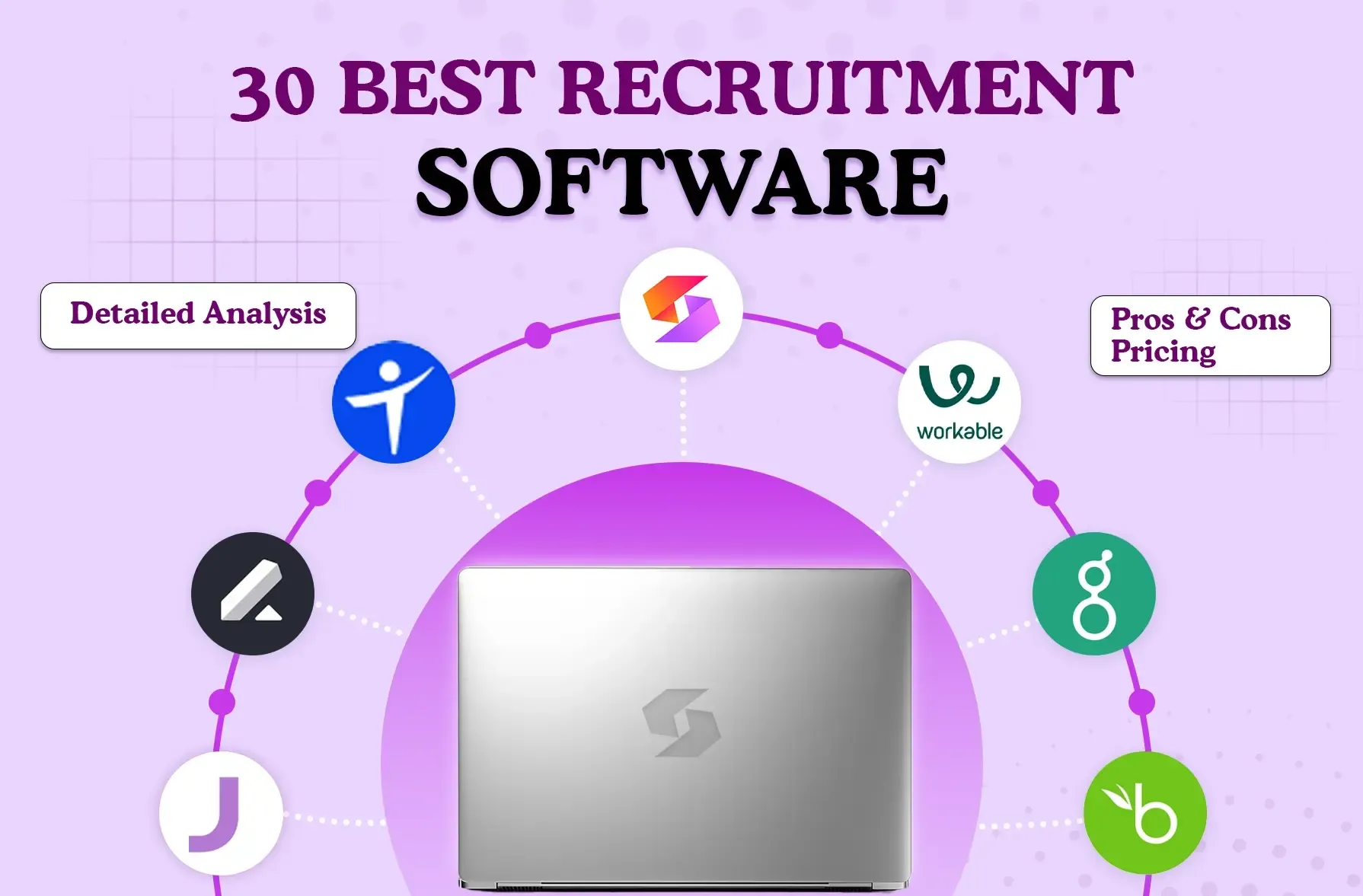Did you know 75% of resumes never make it past the first filter? This is why we need tools like an AI resume parser. In today’s world, companies have a lot of applications. So, they need an AI resume parser to make hiring faster and easier.
AI resume parsers like Skima AI are the key to modern hiring. They reduce time spent on reading resumes and help pick candidates fairly. Using an AI resume parser makes hiring data-driven. So, let’s see how to pick, configure and use an AI resume parser for different industries.
Summary
- 75% of resumes don’t pass initial filters.
- AI resume parsers simplify the recruitment process.
- Reducing bias is crucial for fair hiring.
- Automated systems save time in applicant tracking.
- Customisation makes recruitment more efficient for specific roles.
Picking the Right AI Resume Parser
Picking the right AI resume parser is important for success. It should be easy to use, fit into the current workflow and work well with HR software without any hiccups.
Accuracy is key. The best parser should extract the right details every time. It should handle different file types for different submissions, such as PDFs and Word documents.
The parser’s success depends on its machine learning. Better algorithms can understand different resume formats and industry needs. Brands like Skima, HireAbility and DaXtra have
unique features that cater to different company needs.
- User interface and accessibility
- Integration with current HR systems
- Parsing accuracy
- File format compatibility
- Machine learning adaptability
Companies need to match the features of resume-reading software to their hiring goals. This thoughtful choice helps in a more strategic hiring process. It ensures the tool meets the company’s needs.
Customization of AI Resume Parser for Industry - Specific Requirements
The personalization of an AI resume parser would be different for different industries because each one has unique qualification and skill requirements. For example, a tech company may look for programming skills and other knowledge related to that, whereas organizations concerning health care often require certain certifications and clinical experience.
This means that it customizes the resume parser in such a way that it identifies the most suitable candidates. It's the case of making the parser understand what each industry needs.
Customizing refers to the fact that one must set up keyword recognition and establish parsing templates matching job descriptions in specific fields. This makes the recruiting process much faster. Below are the key areas to focus on:
- Keyword Recognition: The parser finds you the most important terms for each industry so that your results are the best possible.
- Template Configuration: Configuring templates that match the requirements of jobs in a specific industry better enables filtering through resumes.
- Qualifications Assessment: clear qualifications stated for each role help the parser check if the candidate fits the job.
This gives better candidate profiles. This aids the recruiter to make better hiring decisions. Companies that use an AI resume parser to focus on what matters in an industry stand out.
Setting Key Parsing Parameters
Setting parameters is crucial for a good AI resume parser. Companies need to choose the most relevant traits for their hiring needs. These can be specific keywords, degrees, skills and experience levels.
Follow these:
- Define essential skills and qualifications for each role.
- Update criteria as job requirements and market changes.
- Use both hard data and subjective criteria to get a complete candidate profile.
- Include industry-specific terms that will surface the most qualified candidates.
By setting these parameters correctly, companies will have a more accurate parser. This will be a smoother screening process. A clear set of criteria makes it easier to parse to find the best talent.
Data Validation and Quality Control
For an AI resume parser to work well, data validation and quality control is important. Companies should check the parser’s data. They can do this by comparing the parsed data with the original data from the candidates.
This will catch errors early. Getting feedback from hiring managers is also important. They can tell the AI parser when it gets qualifications wrong or needs to be changed. This feedback will keep the parser up to date with the latest hiring needs.
Regular checks are important to maintain quality. These checks look at how the parser is performing over time. They will find common mistakes or areas where it goes wrong most of the time. User testing also helps. It allows staff to try out the parser’s results and give feedback to improve it.
Having a quality control plan will make the AI resume parser better for hiring. By checking data, companies can prevent mistakes. This will be a smoother process.
Training the Parser for Better Accuracy
Training the AI resume parser makes it more accurate and better. Companies use many methods, but supervised learning is the best. By feeding it many resumes, they help it understand different formats and what makes a good resume.
It’s important to train the parser ongoing. This will allow it to learn from feedback and new data. Mixing old and new candidate data will make the software better at recognizing different resume styles and details.
Using different resume styles will help the AI parser to understand candidate skills. Regular updates will keep it up to date with the latest job application trends. Here’s a table to train the parser well:
Training the AI resume parser well will result in better identification and a smoother hiring process. It’s a smart move for any recruitment strategy.
Automated Resume Screening Workflow
Setting up an automated resume screening workflow will boost efficiency and make the hiring process smoother for candidates. It’s important to have a clear plan from the moment resumes are submitted to when candidates are selected.
The workflow consists of:
- Resume Submission: Candidates submit their resumes online, which goes straight to the hiring system.
- Parsing Resumes: An AI tool extracts info from resumes, education, experience and skills.
- Candidate Scoring: The AI scores candidates based on set criteria to show how well they fit the job.
- Ranking: Candidates are listed by scores, which makes it easy to see the best matches.
- Notifications: Recruiters get updates automatically for candidates who score well.
Using an AI resume parser has many advantages. It saves time so recruiters can focus on people skills. It also makes the hiring process clearer and more efficient for candidates.
Companies that adopt this new workflow will get better hiring results. Adding automation will make them stand out and attract better candidates.
Data Privacy Laws
Using an AI resume parser means you need to be aware of data privacy laws. Laws like GDPR and CCPA dictate how companies handle candidate data. You need to know these laws to be legal and to build trust with job seekers.
To comply with data privacy laws, companies need to:
- Have clear data collection policies that tell candidates how their data will be used.
- Use secure data storage to keep sensitive info from hackers.
- Regular checks should be done to see how data is handled and spot any risks.
You need to get the candidate’s consent before using their data. This means telling them why you’re collecting data and letting them agree or not.
Being transparent about how you use data builds trust in the hiring process. Companies can prove they’re trustworthy by telling candidates about their data rights and privacy practices.
Monitoring and Optimization
After using an AI resume parser, it’s important to monitor how it’s doing. Tracking accuracy rates, time to hire, and candidate feedback will help you see if it’s working. This will allow teams to see what’s working and what’s not and always improve.
Improve the AI resume parser based on data-driven decisions. Companies can see where to improve by analysing trends and how the users are interact with them. Updating changes on this data keeps the AI up to date with new hiring trends and company goals.
Here are some key metrics to track:
Being proactive with AI will bring big wins in finding the right people and making the company run better. Regular updates will keep the AI resume parser up to date with changing hiring and company needs.
Conclusion
Using an AI resume parser makes hiring easier and more accurate. It saves time by filtering many applications. This tool will find the best candidates faster.
Setting up an AI resume parser requires thought. It’s important to customise it to your industry and follow the rules. Keeping it updated is key to changing hiring needs.
As hiring trends change, using AI is important to finding top talent, and a good resume parser is key to better hiring strategies. It will help you make smarter decisions and meet business goals.
Frequently Asked Questions
Q1. How does a resume parser help with recruitment?
Ans. It makes hiring better by reducing manual resume reading. It reduces bias in candidate selection and makes the process more efficient. Hiring managers can focus on the best candidates and match them to the job better.
Q2. What to look for in a resume parsing tool?
Ans. Look for tools that are user-friendly and integrate with HR systems. They should parse resumes accurately and support multiple file types. Advanced machine learning will make them work better.
Q3. Can an AI resume parser be industry-specific?
Ans. Yes, you can customise an AI resume parser for different industries. This way, companies can focus on the most important qualifications and skills. It will find the best candidates for their needs.
Q4. How do organisations define parsing parameters?
Ans. Companies set criteria based on their hiring needs. This includes keywords, educational backgrounds, skills and experience levels required for the job. Keeping these criteria up to date is important.
Q5. Why data validation?
Ans. Data validation ensures the parsed data is correct and trustworthy. Checking the parsed data against what candidates say will prevent mistakes. This will make the hiring process better.
Q6. How do organisations train their AI resume parser?
Ans. Training the AI parser involves supervised learning with many resumes. It learns from feedback and new data gets better at finding qualified candidates.
Q7. How to set up an automated resume-screening workflow?
Ans. To automate resume screening, integrate the AI parser with your recruitment system. Set up a scoring and ranking system for candidates. Automate updates with hiring managers. This will find candidates faster and improve the hiring process.
Q8. How do you comply with data privacy laws when using a resume parser?
Ans. Comply by understanding the laws like GDPR and CCPA. Use clear data collection policies, secure storage, and get candidate consent. This will make the recruitment process trustworthy and legal.
Q9. What should be monitored and optimised in an AI resume parser?
Ans. Keep an eye on how the AI parser is performing by checking its accuracy and how fast it finds candidates. Make changes based on this data. This will keep the tool working and up to date with changing hiring needs.



